 W
WApache Jena is an open source Semantic Web framework for Java. It provides an API to extract data from and write to RDF graphs. The graphs are represented as an abstract "model". A model can be sourced with data from files, databases, URLs or a combination of these. A model can also be queried through SPARQL 1.1.
 W
WApache Marmotta is a linked data platform that comprises several components. In its most basic configuration it is a Linked Data server. Marmotta is one of the reference projects early implementing the new Linked Data Platform recommendation that is being developed by W3C.
 W
WBeamly was a technology company based in London, UK and New York City, United States. The company was founded in April 2011 as tBone TV, later renamed to Zeebox, by Ernesto Schmitt and Anthony Rose. It was started as a social discovery and engagement platform with 2nd-screen TV, creating the concept of social television.
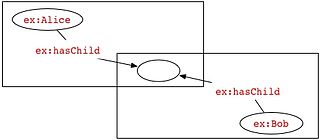 W
WIn RDF, a blank node is a node in an RDF graph representing a resource for which a URI or literal is not given. The resource represented by a blank node is also called an anonymous resource. According to the RDF standard a blank node can only be used as subject or object of an RDF triple.
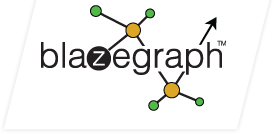 W
WBlazegraph is a triplestore and graph database, which is used in the Wikidata SPARQL endpoint.
 W
WIn information science a conceptualization is an abstract simplified view of some selected part of the world, containing the objects, concepts, and other entities that are presumed of interest for some particular purpose and the relationships between them. An explicit specification of a conceptualization is an ontology, and it may occur that a conceptualization can be realized by several distinct ontologies. An ontological commitment in describing ontological comparisons is taken to refer to that subset of elements of an ontology shared with all the others. "An ontology is language-dependent", its objects and interrelations described within the language it uses, while a conceptualization is always the same, more general, its concepts existing "independently of the language used to describe it". The relation between these terms is shown in the figure to the right.
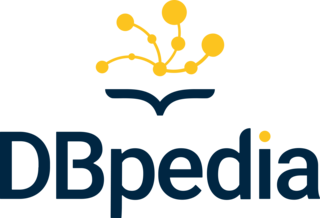 W
WDBpedia is a project aiming to extract structured content from the information created in the Wikipedia project. This structured information is made available on the World Wide Web. DBpedia allows users to semantically query relationships and properties of Wikipedia resources, including links to other related datasets.
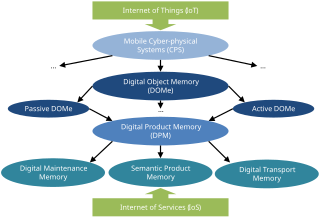 W
WA digital object memory (DOMe) is a digital storage space intended to keep permanently all related information about a concrete physical object instance that is collected during the lifespan of this object and thus forms a basic building block for the Internet of Things (IoT) by connecting digital information with physical objects.
 W
WThe Dublin Core, also known as the Dublin Core Metadata Element Set, is a set of fifteen "core" elements (properties) for describing resources. This fifteen-element Dublin Core has been formally standardized as ISO 15836, ANSI/NISO Z39.85, and IETF RFC 5013. The Dublin Core Metadata Initiative (DCMI), which formulates the Dublin Core, is a project of the Association for Information Science and Technology (ASIS&T), a non-profit organization. The core properties are part of a larger set of DCMI Metadata Terms. "Dublin Core" is also used as an adjective for Dublin Core metadata, a style of metadata that draws on multiple Resource Description Framework (RDF) vocabularies, packaged and constrained in Dublin Core application profiles.
 W
WFacebook Graph Search was a semantic search engine that was introduced by Facebook in March 2013. It was designed to give answers to user natural language queries rather than a list of links. The name refers to the social graph nature of Facebook, which maps the relationships among users. The Graph Search feature combined the big data acquired from its over one billion users and external data into a search engine providing user-specific search results. In a presentation headed by Facebook CEO Mark Zuckerberg, it was announced that the Graph Search algorithm finds information from within a user's network of friends. Additional results were provided by Microsoft's Bing search engine. In July it was made available to all users using the U.S. English version of Facebook. After being made less publicly visible starting December 2014, the original Graph Search was almost entirely deprecated in June 2019.
 W
WFOAF is a machine-readable ontology describing persons, their activities and their relations to other people and objects. Anyone can use FOAF to describe themselves. FOAF allows groups of people to describe social networks without the need for a centralised database.
 W
WGeoNames is a user editable geographical database available and accessible through various web services, under a Creative Commons attribution license. The project was founded in late 2005.
 W
WiGlue is an experimental database with detailed search options, containing entities and information editing tool. It organizes interrelated images, videos, individuals, institutions, objects, websites, geographical locations into cohesive data structures.
 W
WOn wikis, an infobox is a table used to collect and present a subset of information about its subject, such as a document. It is a structured document containing a set of attribute–value pairs, and in Wikipedia represents a summary of information about the subject of an article. In this way, they are comparable to data tables in some aspects. When presented within the larger document it summarizes, an infobox is often presented in a sidebar format.
 W
WIntegrated Operations in the High North is a unique collaboration project that during a four-year period starting May 2008 is working on designing, implementing and testing a Digital Platform for what in the Upstream Oil and Gas Industry is called the next or second generation of Integrated Operations. The work on the Digital platform is focussed on capture, transfer and integration of Real-time data from the remote production installations to the decision makers. A risk evaluation across the whole chain is also included. The platform is based on open standards and enables a higher degree of interoperability. Requirements for the digital platform come from use cases defined within the Drilling and Completion, Reservoir and Production and Operations and Maintenance domains. The platform will subsequently be demonstrated through pilots within these three domains.
 W
WIn computing, linked data is structured data which is interlinked with other data so it becomes more useful through semantic queries. It builds upon standard Web technologies such as HTTP, RDF and URIs, but rather than using them to serve web pages only for human readers, it extends them to share information in a way that can be read automatically by computers. Part of the vision of linked data is for the Internet to become a global database.
 W
WNamed graphs are a key concept of Semantic Web architecture in which a set of Resource Description Framework statements are identified using a URI, allowing descriptions to be made of that set of statements such as context, provenance information or other such metadata.
 W
WThe Neuroscience Information Framework is a repository of global neuroscience web resources, including experimental, clinical, and translational neuroscience databases, knowledge bases, atlases, and genetic/genomic resources and provides many authoritative links throughout the neuroscience portal of Wikipedia.
 W
WIn computer science, information science and systems engineering, ontology engineering is a field which studies the methods and methodologies for building ontologies, which encompasses a representation, formal naming and definition of the categories, properties and relations between the concepts, data and entities. In a broader sense, this field also includes a knowledge construction of the domain using formal ontology representations such as OWL/RDF. A large-scale representation of abstract concepts such as actions, time, physical objects and beliefs would be an example of ontological engineering. Ontology engineering is one of the areas of applied ontology, and can be seen as an application of philosophical ontology. Core ideas and objectives of ontology engineering are also central in conceptual modeling.
 W
WOntotext GraphDB is a graph database and knowledge discovery tool compliant with RDF and SPARQL and available as a high-availability cluster. Ontotext GraphDB is used in various European research projects.
 W
WOpen Energy Information (OpenEI) is a website for policy makers, researchers, technology investors, venture capitalists, and market professionals with energy data, information, analyses, tools, images, maps, and other resources. It was established by the United States Department of Energy on 9 December 2009.
 W
WEclipse RDF4J is an open-source framework for storing, querying, and analysing RDF data. It was created by the Dutch software company Aduna as part of "On-To-Knowledge", a semantic web project that ran from 1999 to 2002. It contains implementations of an in-memory triplestore and an on-disk triplestore, along with two separate Servlet packages that can be used to manage and provide access to these triplestores, on a permanent server. The RDF4J Rio package contains a simple API for Java-based RDF parsers and writers. Parsers and writers for popular RDF serialisations are distributed along with RDF4J, and users can easily extend the list by putting their parsers and writers on the Java classpath when running their application.
 W
WThe Semantic Web Services Language (SWSL) is a general-purpose logical language for specifying Semantic Web Services Ontologies (SWSOs), as well as individual Web services. The Semantic Web Services Language (SWSL) describes the syntax elements of SWSL and its semantic and semantic foundations. It can be used with the underlying language and network structure of Semantic Web Services. Syntactically, first-order logic is a subset of the Semantic Web Services Language (SWSL).
 W
WThe Semantic Web Stack, also known as Semantic Web Cake or Semantic Web Layer Cake, illustrates the architecture of the Semantic Web.
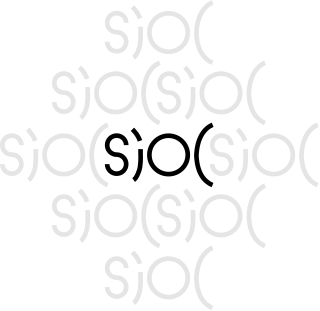 W
WSemantically-Interlinked Online Communities Project is a Semantic Web technology. SIOC provides methods for interconnecting discussion methods such as blogs, forums and mailing lists to each other. It consists of the SIOC ontology, an open-standard machine readable format for expressing the information contained both explicitly and implicitly in Internet discussion methods, of SIOC metadata producers for a number of popular blogging platforms and content management systems, and of storage and browsing/searching systems for leveraging this SIOC data.
 W
WShape Expressions (ShEx) is a data modelling language for validating and describing a Resource Description Framework (RDF).
 W
WTwine was an online, social web service for information storage, authoring and discovery, located at twine.com, that existed from 2007 to 2010. It was created and run by Radar Networks. The service was announced on October 19, 2007 and made open to the public on October 21, 2008. On March 11, 2010, Radar Networks was acquired by Evri Inc. along with Twine.com. On May 14, 2010, twine.com was shut down, becoming a redirect to evri.com.
 W
WUMBEL is a logically organized knowledge graph of 34,000 concepts and entity types that can be used in information science for relating information from disparate sources to one another. It was retired at the end of 2019. UMBEL was first released in July 2008. Version 1.00 was released in February 2011. Its current release is version 1.50.
 W
WVirtuoso Universal Server is a middleware and database engine hybrid that combines the functionality of a traditional relational database management system (RDBMS), object–relational database (ORDBMS), virtual database, RDF, XML, free-text, web application server and file server functionality in a single system. Rather than have dedicated servers for each of the aforementioned functionality realms, Virtuoso is an "universal server"; it enables a single multithreaded server process that implements multiple protocols. The free and open source edition of Virtuoso Universal Server is also known as OpenLink Virtuoso. The software has been developed by OpenLink Software with Kingsley Uyi Idehen and Orri Erling as the chief software architects.
 W
WWikifunctions is a collaboratively edited catalog of computer functions that aims to allow the creation, modification, and reuse of source code. It is closely related to Abstract Wikipedia, an extension to Wikidata that aims to create a language-independent version of Wikipedia using its structured data. Provisionally named Wikilambda, the definitive name of Wikifunctions was announced on 22 December 2020 following a naming contest. The Wikifunctions website is expected to launch in 2022 and will be the first new Wikimedia project to launch since 2012.
 W
WYummly is an American mobile app and website that provides recipe recommendations personalized to the individual's tastes, semantic recipe search, a digital recipe box, shopping list and one-hour grocery delivery. The Yummly app is available for iOS, Android and web browsers. The Yummly app was named "Best of 2014" in Apple's App Store.